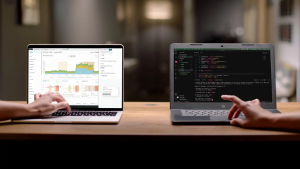Operational efficiency is best known as the ratio between business input and business output: the resources used versus the business outcome. Operational efficiency helps DevOps, operations, site reliability engineering (SRE), and other teams achieve their goals in the most effective way.
In the 2021 Accelerate State of DevOps report, Google Cloud’s DevOps Research and Assessment (DORA) reported that teams who excel at modern operational practices are 1.4 times more likely to report greater software delivery and operational performance, and 1.8 times more likely to report better business outcomes.
Here are four ways to improve efficiency as part of your observability practice.
1. Collect all telemetry in one place
The four essential data types for observability telemetry are metrics, events, logs, and traces (MELT). You can read more about these in MELT 101. An observability platform gives you all of that telemetry data in one place. Service characterization ensures you have the right instrumentation to get the data to meet your observability objectives—service level agreements (SLA), monitoring customer experience, tracking compliance, and others. Teams can then take this data to quickly resolve issues and proactively identify ways to optimize performance.
Get started: Instrument your entire stack with out-of-the-box integrations and quickstarts from New Relic.
2. Get everyone speaking the same language
When it comes to observability, common language starts with naming conventions. This gives operations staff a common language to use with developers during incidents, reducing the time to triage, and addressing problems before they impact customers.
Get started: Establish a naming convention for your applications and use labels to help you search and filter tasks. You can use a naming convention such as: <environment>-<appname>-<language> to make it easier to spot patterns in your data. You can also use labels and categories to help organize your telemetry.
3. Reduce the toil by making observability automatic
Use automation as much as possible. Automating instrumentation is the first step. Control and configure your observability platform to prevent delay between data acquisition and realizing the value of that data. Called observability-as-code, automation lets you easily repeat, scale, and update observability resources.
Get started: Use a provisioning tool such as Terraform to make packaged sets of resources—such as dashboards, alerts, and workloads—easily shared and deployed.
4. Reign in tool sprawl
With everything in one place, you’ll operate more efficiently. You’ll also reduce the operational burden, complexity, and cost of maintaining other tools and systems. Built-in integrations for open source tools in your observability platform make it easy to have a single source of truth. Some ways to reign in tool sprawl include:
- Critically analyzing existing toolsets and use cases they support.
- Strategically combining relevant data into your observability platform.
- Removing tool and technology redundancies.
Get started: Plan, prepare, and execute a tool consolidation strategy, including alert standardization to consolidate your data.
Próximos passos
- Read observability best practices around alert quality, development code quality, and digital customer experience.
- Learn more by reading our operational efficiency implementation guides.
As opiniões expressas neste blog são de responsabilidade do autor e não refletem necessariamente as opiniões da New Relic. Todas as soluções oferecidas pelo autor são específicas do ambiente e não fazem parte das soluções comerciais ou do suporte oferecido pela New Relic. Junte-se a nós exclusivamente no Explorers Hub ( discuss.newrelic.com ) para perguntas e suporte relacionados a esta postagem do blog. Este blog pode conter links para conteúdo de sites de terceiros. Ao fornecer esses links, a New Relic não adota, garante, aprova ou endossa as informações, visualizações ou produtos disponíveis em tais sites.



